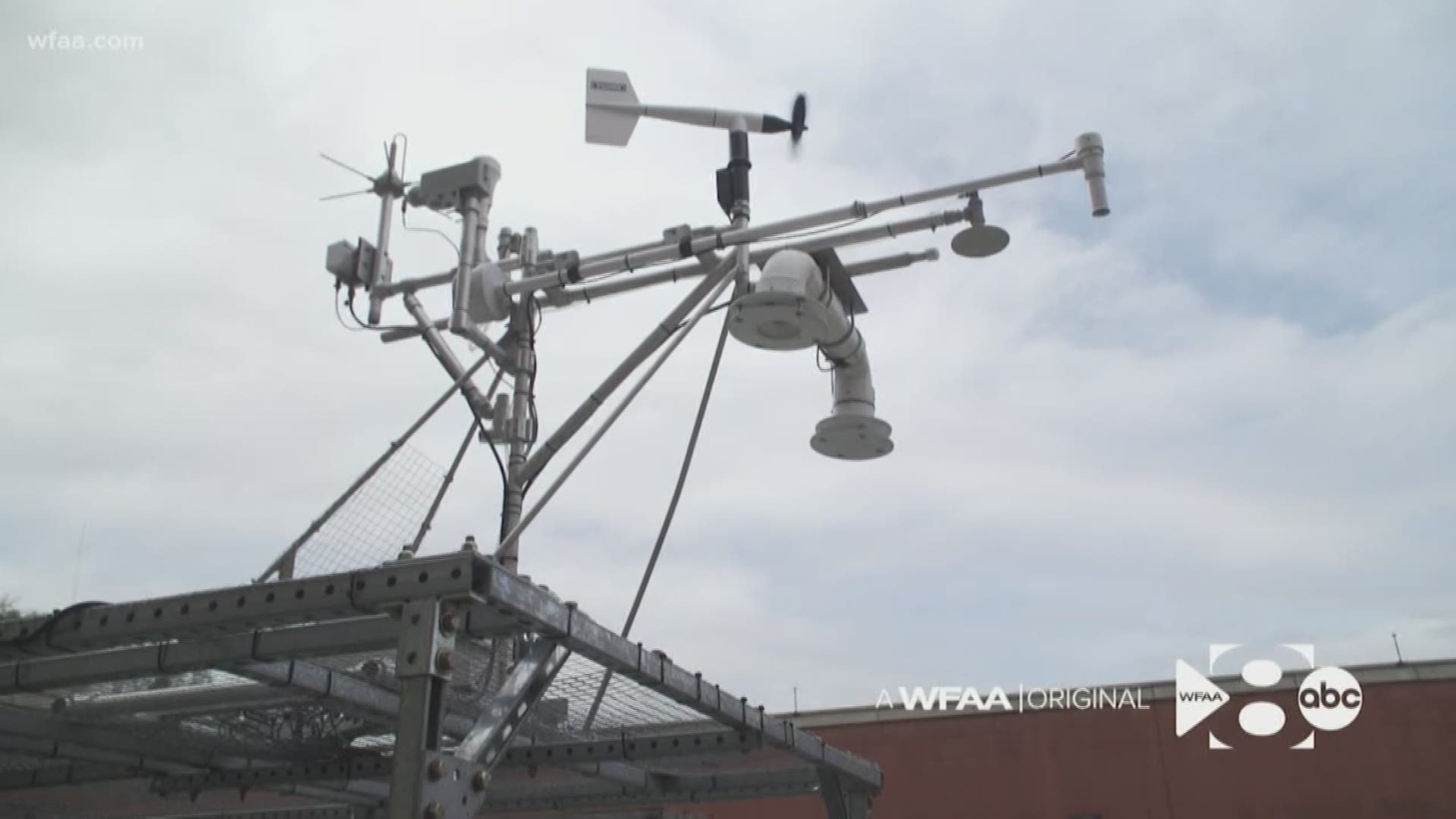DALLAS — Severe weather is inevitable in North Texas.
When severe thunderstorm and tornado warnings are issued, you only get about 13 minutes to seek shelter. What if those warning times increased to 30 minutes or even an hour?
WFAA meteorologist Jesse Hawila took a trip to Norman, Okla., where new research and technology is aim to do just that.
Hawila's first stop? A blue-domed building that houses the Advanced Technology Demonstrator, the newest, most advanced weather radar out there.
“Radar is the primary tool for issuing warnings," said Kurt Hondl, the deputy director of the National Severe Storms Laboratory. "The better the tools the forecasters have, the better they can issue warnings. Phased array radar offers faster updates so that forecasters can make that decision quicker.”
"Phased array" is the main difference between the radars we have today and the radars of the future.
“Instead of having one transmitter, in this case, we have 4,864 transmitters," Hondl said.
Phased array radar scans the sky electronically instead of mechanically. This allows the radar beam to focus on particular areas of interest, like a severe storm or tornado to provide more frequent radar updates.
“Through our research, we hope to improve the effectiveness of tornado warnings," Hondl said. "We want to lengthen the lead time of the warning and reduce false alarms.”
According to a 2011 study published by the American Meteorological Society, the average False Alarm Rate for tornado warnings is about 75%. That means only one out of every four tornado-warned storms actually produce a tornado.
Another study found the average lead time for a tornado is only 13 minutes. That’s how long you have to seek shelter after a warning is issued before a tornado hits. These stats may seem a bit alarming, but we’ve come a long way in a short amount of time.
“It’s insane how much it’s changed," said Erik Rasmussen, a senior research meteorologist at NOAA who’s been chasing and studying tornadoes in the field for 45 years. "When we started out, we had paper maps coming off the fax machine twice a day. We’d point to a state and say, ‘There might be tornadoes there.’ That was the best we could do.”
“I started out doing storm chasing in the 70s and 80s," he continued. "We had the 16mm movie cameras that we would film tornadoes with and take the film back to the laboratory and track little pieces of debris frame by frame by frame.”
Now, Rasmussen is helping lead TORUS, one of the most detailed severe storm research projects ever. It involves drones, a hurricane hunter aircraft, three mobile radar systems, balloon-borne sensor launchers and eight mesonet trucks equipped with data collection instruments.
The goal of TORUS is to gather data of small-scale structures in and around supercells. They want to know what’s going on in these massive storms before, during and after a tornado.
“For the first time, we’re going to release a swarm of sounding balloons with weather instruments just to the north or ahead of the developing rotation," Rasmussen said. "Try to send them all in at once, like release eight in four minutes. We can get a rake of observations temperature and humidity in the low-level air that’s flowing into the developing tornado.”
These observations taken directly from the storm will help forecasters understand what makes some storms drop tornadoes and others not.
"The innovative stuff in TORUS is we will be flying UAV aircraft along the edge of the precipitation ahead of the developing rotation and to the rear of the developing rotation to try to pick up on those temperature contrasts," Rasmussen said. "That’s never been done successfully.”
This is all the future of technology that could help one team -- the Storm Prediction Center, the National Weather Service, the National Severe Storms Laboratory, broadcasters, emergency management -- who all work together with one common goal, to protect property and lives.

